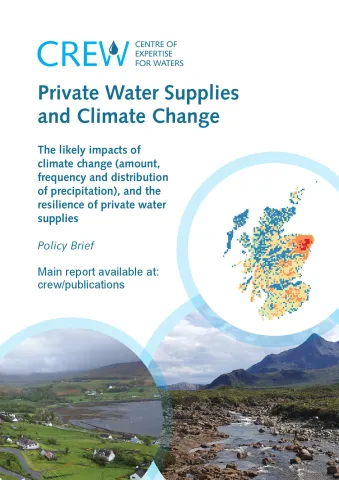The aim of this study was to better understand the likely impacts of climate change (amount, frequency, and distribution of precipitation) on Private Water Supplies (PWS) in Scotland. In particular, the consequences on PWS resilience to water shortages in order to assess changes in vulnerability due to reduced quantity of water as a result of climate change.
Scotland has abundant water resources as a result of its mostly temperate and oceanic climate, but with a highly variable spatial and temporal distribution of precipitation. The west is generally wetter whilst the east is dryer, giving a distinct west to east gradient due to the ‘rain shadow’ influence of the western and northern uplands. Annual and decadal variability in precipitation can be large. Drought can be an issue with very low river and spring flows and low reservoir and loch levels known to occur in both west and east Scotland in connection with periods of prolonged (i.e. lasting for one season or longer) dry weather. The 2015-2021 River Basin Management Plan (RBMP) report compiled by the Scottish Environment Protection Agency (SEPA) points to a greater risk of water flows being worse than the good status required by the Water Framework Directive (“Directive 2000/60/EC) in rivers used for irrigating cropland but only during dry weather. It is essential to address resilience to drought given the latest climate projections for the UK (UKCP18) indicating increasingly variable weather, including: altered spatial and temporal precipitation patterns and variable amounts across Scotland (West becoming increasingly wetter, East becoming drier); higher probability of drier and warmer summers; and increased rates of loss of surface water through greater evapotranspiration (from plants and ground surfaces) and evaporation from water bodies.
| Attachment | Size |
|---|---|
| CRW2018_05 Policy Brief | 2.14 MB |
| CRW2018_05 Main Report | 7.14 MB |
